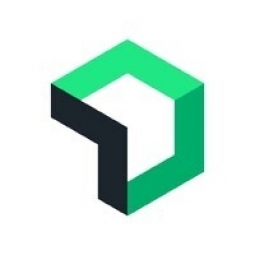Applicable Industries
- Cement
- Healthcare & Hospitals
Use Cases
- Demand Planning & Forecasting
- Time Sensitive Networking
Services
- System Integration
About The Customer
Founded in 2012 in Bengaluru, India, HealthifyMe is a revolutionary health and fitness app that aims to transform a billion lives using the power of AI and human empathy. The app is changing how people stay fit, eat clean, and build a lasting and healthy lifestyle. With over 35 million downloads and 1500-plus nutrition, fitness, and yoga coaches, HealthifyMe has carved out a niche in South East Asia, and is looking to conquer the global market. It also has a B2B wing through which it connects with over 100 companies across India to deliver employee wellness solutions.
The Challenge
HealthifyMe, a health and fitness app based in India, was facing a significant challenge in managing its growing user base, particularly during peak periods such as after Diwali, Christmas, and the New Year. The app, which has over 35 million downloads and 1500-plus nutrition, fitness, and yoga coaches, was experiencing a two to three times spike in traffic during these periods, causing a tremendous system load. Additionally, the company was also dealing with the challenge of streamlining COVID-19 vaccination bookings when the government rollout was launched for people in India under the age of 45. The booking slots were in short supply, and the team needed to build a feature that would allow people to find nearby vaccination slots with ease.
The Solution
To address these challenges, HealthifyMe turned to New Relic, a software analytics company. With New Relic, HealthifyMe was able to create a single source of truth based on real-time data, which was integral to enhancing developer productivity and creating a sense of ownership among its developers. The technology also helped the company ensure peak demand performance and enhance system resilience. As a result, the technology team was able to spend more time developing new features instead of firefighting. In addition to supporting the transformation of HealthifyMe’s DevOps team, New Relic also helped to break down team silos and improve the Site Reliability Engineering (SRE) function. Looking forward, HealthifyMe plans to mature its observability footprint by leveraging New Relic’s advanced capabilities through its DataPlus offering, including vulnerability management.
Operational Impact
Quantitative Benefit

Case Study missing?
Start adding your own!
Register with your work email and create a new case study profile for your business.
Related Case Studies.

Case Study
System 800xA at Indian Cement Plants
Chettinad Cement recognized that further efficiencies could be achieved in its cement manufacturing process. It looked to investing in comprehensive operational and control technologies to manage and derive productivity and energy efficiency gains from the assets on Line 2, their second plant in India.

Case Study
Hospital Inventory Management
The hospital supply chain team is responsible for ensuring that the right medical supplies are readily available to clinicians when and where needed, and to do so in the most efficient manner possible. However, many of the systems and processes in use at the cancer center for supply chain management were not best suited to support these goals. Barcoding technology, a commonly used method for inventory management of medical supplies, is labor intensive, time consuming, does not provide real-time visibility into inventory levels and can be prone to error. Consequently, the lack of accurate and real-time visibility into inventory levels across multiple supply rooms in multiple hospital facilities creates additional inefficiency in the system causing over-ordering, hoarding, and wasted supplies. Other sources of waste and cost were also identified as candidates for improvement. Existing systems and processes did not provide adequate security for high-cost inventory within the hospital, which was another driver of cost. A lack of visibility into expiration dates for supplies resulted in supplies being wasted due to past expiry dates. Storage of supplies was also a key consideration given the location of the cancer center’s facilities in a dense urban setting, where space is always at a premium. In order to address the challenges outlined above, the hospital sought a solution that would provide real-time inventory information with high levels of accuracy, reduce the level of manual effort required and enable data driven decision making to ensure that the right supplies were readily available to clinicians in the right location at the right time.

Case Study
Gas Pipeline Monitoring System for Hospitals
This system integrator focuses on providing centralized gas pipeline monitoring systems for hospitals. The service they provide makes it possible for hospitals to reduce both maintenance and labor costs. Since hospitals may not have an existing network suitable for this type of system, GPRS communication provides an easy and ready-to-use solution for remote, distributed monitoring systems System Requirements - GPRS communication - Seamless connection with SCADA software - Simple, front-end control capability - Expandable I/O channels - Combine AI, DI, and DO channels

Case Study
Driving Digital Transformations for Vitro Diagnostic Medical Devices
Diagnostic devices play a vital role in helping to improve healthcare delivery. In fact, an estimated 60 percent of the world’s medical decisions are made with support from in vitrodiagnostics (IVD) solutions, such as those provided by Roche Diagnostics, an industry leader. As the demand for medical diagnostic services grows rapidly in hospitals and clinics across China, so does the market for IVD solutions. In addition, the typically high cost of these diagnostic devices means that comprehensive post-sales services are needed. Wanteed to improve three portions of thr IVD:1. Remotely monitor and manage IVD devices as fixed assets.2. Optimizing device availability with predictive maintenance.3. Recommending the best IVD solution for a customer’s needs.

Case Study
HaemoCloud Global Blood Management System
1) Deliver a connected digital product system to protect and increase the differentiated value of Haemonetics blood and plasma solutions. 2) Improve patient outcomes by increasing the efficiency of blood supply flows. 3) Navigate and satisfy a complex web of global regulatory compliance requirements. 4) Reduce costly and labor-intensive maintenance procedures.




